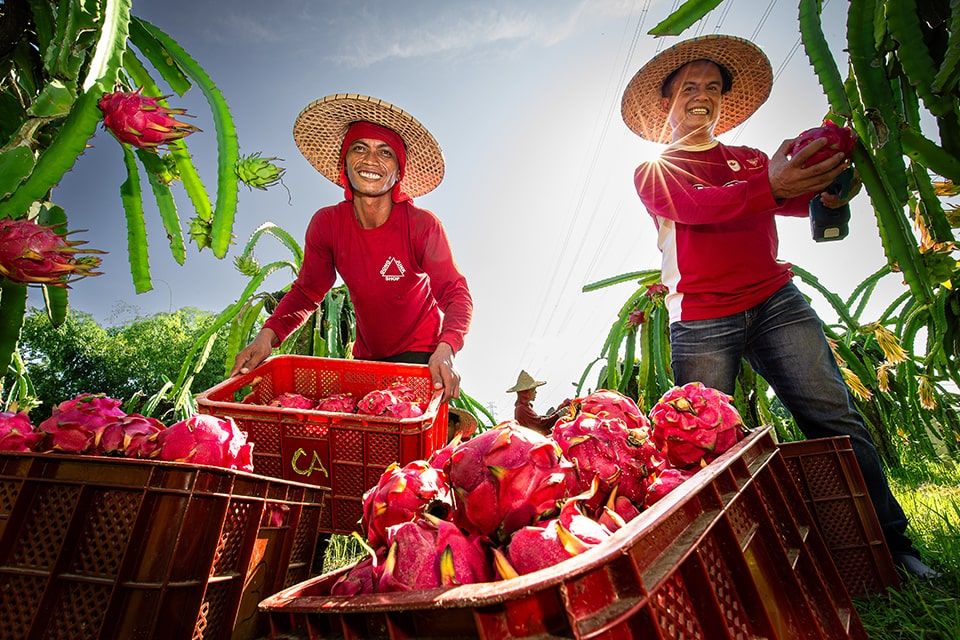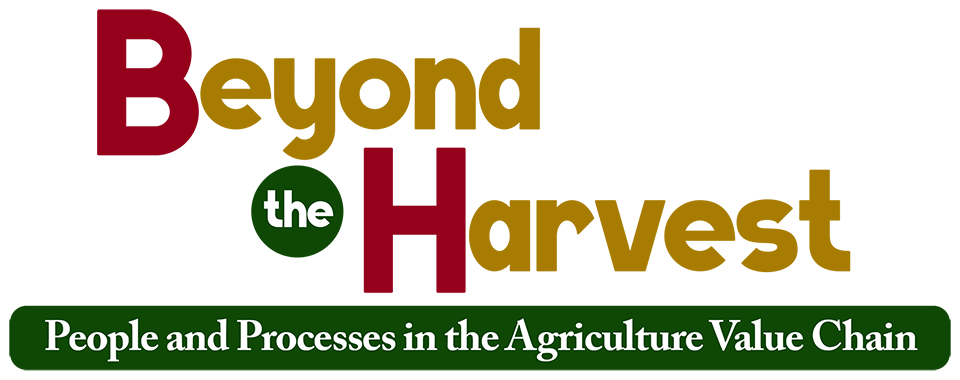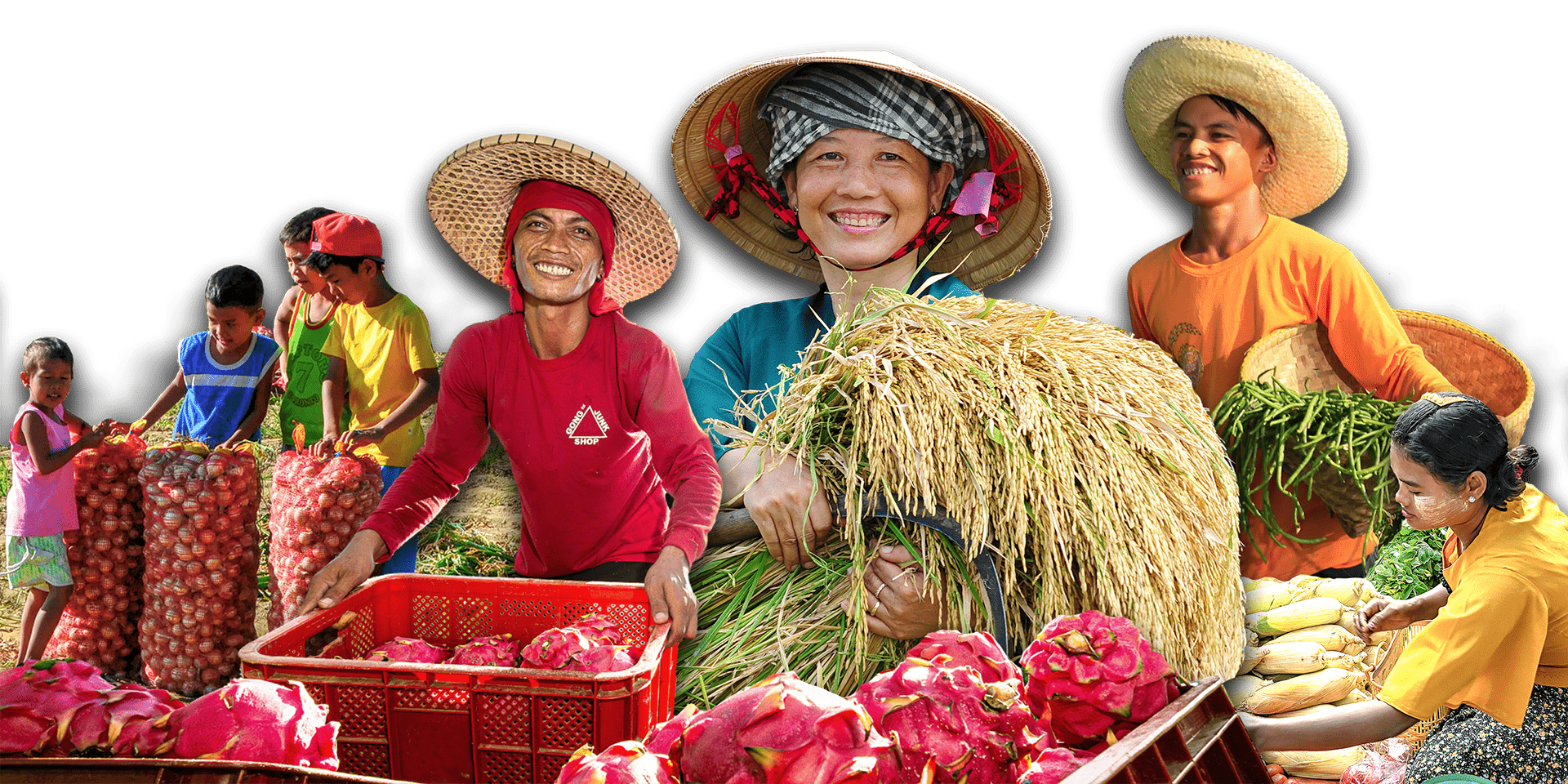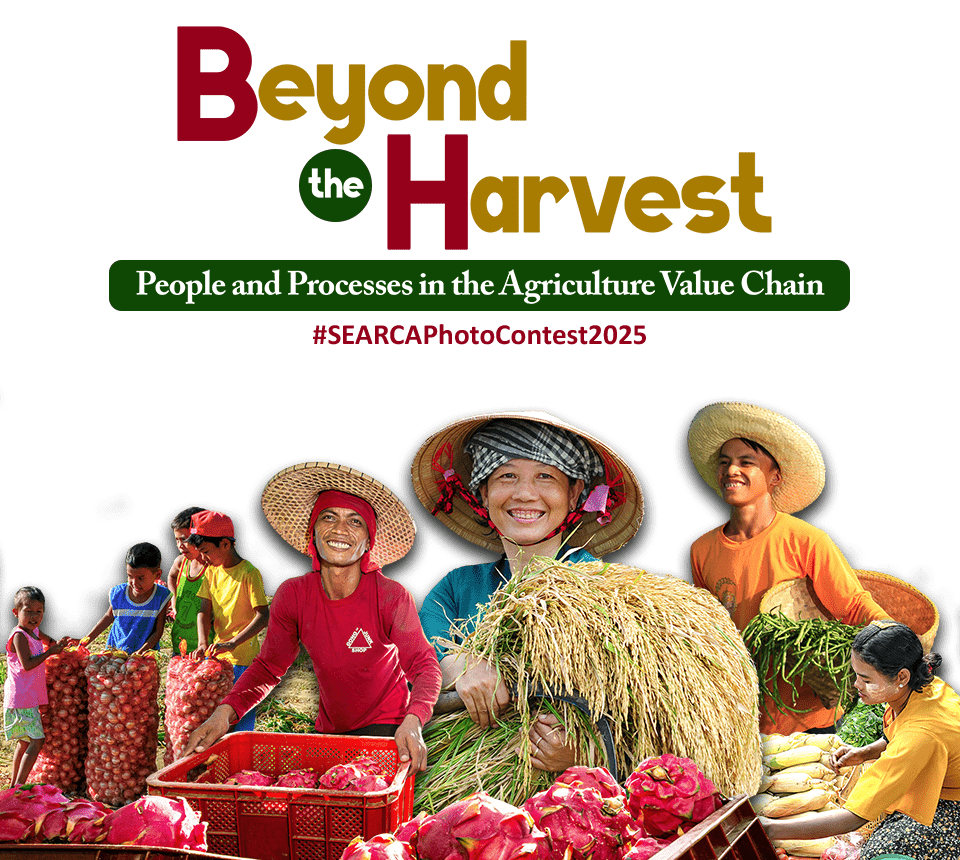19th SEARCA Photo Contest (2025)
When people think of agriculture, they often picture farms and fishers—the fields, the waters, the harvests. What we rarely see are the stories in between—the people and processes that bring food from its source all the way to the plate. From sorting and packaging to transport, trading, and selling, these steps are just as vital in making sure food is safe, fresh, and nourishing for everyone.
Themed "Beyond the Harvest: People and Processes in the Agriculture Value Chain," the 19th SEARCA Photo Contest turns the spotlight on these "in-between" journeys—those overlooked moments that connect producers with markets, communities, and consumers. While past contests have celebrated farmers and their fields, this year we shine a light on the bigger story of agriculture—the journey that continues after the harvest, the people who make it possible, and the ways food creates prosperity beyond the farm or fishing ground.
What to Capture
We are looking for images that reveal the hidden heartbeat of agriculture—activities that show how food moves, transforms, and connects communities.
Your photos might capture:
Postharvest care
Cleaning, sorting, drying, or preserving crops to keep them fresh and safe
Food transformation
From artisanal food-making to small enterprises turning harvests into new products
Transport and movement
Trucks, boats, bikes, or carts bringing produce from rural areas to towns and cities
Markets and trade
The vibrant scenes of wholesale hubs, cooperatives, retail outlets, or busy market stalls
Entrepreneurship
Youth- or women-led businesses adding creativity, branding, and value to local produce
Digital tools
Mobile apps, QR payments, and online platforms that link farmers directly with buyers
Consumer connections
The final step, where families, restaurants, and communities enjoy the fruits of this journey
Working together
Cooperatives and associations pooling resources to grow stronger together
To spark inspiration, imagine:
-
Workers sorting fruits in a cooperative warehouse.
-
Women preparing cassava chips or packaging coffee for sale.
-
Trucks, boats, or bicycles ferrying vegetables to market.
-
Youth entrepreneurs showcasing their products at a local fair.
-
Families shopping at a weekend wholesale market or dining in a farm-to-table restaurant.

Every photograph tells a story. This year, let your lens uncover the unseen journeys that bring food from the harvest to the table—and celebrate the people who make it possible.
Submission deadline: 30 November 2025
Guidelines and Mechanics
1. Eligibility
The 19th SEARCA Photo Contest is open to all Southeast Asian nationals, except SEARCA staff and their immediate family members.
2. Submission Period and Platform
All entries must be submitted via https://photocontest.searca.org/2025 during the submission period, 5 September–30 November 2025, 11:59 p.m. (GMT+8).
3. Entry Specifications and Certification
A contestant can submit an unlimited number of entries as long as they meet the photo contest specifications, as follows:
To minimize plagiarism, contestants will be asked to certify that:
- They own the submitted photographs and grant SEARCA full permission to use them in knowledge packaging, sharing, and advocacy related to SEARCA's mandate. SEARCA will ensure the photographer is properly credited for photos used, such as in print and digital publications.
- The photographs are original, have not won any previous photo contests, been published elsewhere (whether in print or electronically), or submitted as entries to any other photo contests during the 19th SEARCA Photo Contest period. The same or similar photos submitted to past SEARCA photo contests may not be submitted again.
- The photos have not been digitally altered or enhanced in any way other than simple cropping.
4. Photo Format Requirements
Entries must be digital, colored, in JPEG format, and at least 3,000 pixels wide for a horizontal image or 3,000 pixels tall for a vertical image at 300 dpi.
5. Entry Information Details
Each entry should include the following details in English:
- Photographer's full name, age range, and gender
- Photographer's country of origin
- Photographer's professional status
- Photo caption
- Place where the photo was taken (include country)
- Complete date taken
6. Judging Criteria
Photos will be judged based on the following criteria:
| Relevance to the theme | 40% |
| Technical quality (clarity, use of tones and color, photographic composition) |
30% |
| Impact | 30% |
| TOTAL | 100% |
7. Evaluation Process
Photo entries will undergo a tiered evaluation process, as follows:
- Initial Screening: The Photo Contest Secretariat will first screen all entries for eligibility.
- Shortlisting: A committee of selected SEARCA staff and scholars will then shortlist the qualified photos.
- Final Judging: A panel of external experts will serve as the final judges to select the top three winners from the shortlisted finalists.
- SEARCA Center Director's Choice: The SEARCA Center Director will select one photo from the finalists.
8. Winner Notification
Winners will be notified via email. SEARCA has the right to offer the prize to the next winning entry if the winner does not respond within two weeks after notification.
9. Prize Claim Requirements
Winners will be asked to provide their bank information for cash prize remittance; certificates of recognition will be sent by mail.
10. Prize Remittance Guidelines
Remittance of cash prizes will follow current SEARCA administrative and financial guidelines.
Prizes and Award
First Prize
USD 1,000 and a Certificate
Second Prize
USD 800 and a Certificate
Third Prize
USD 500 and a Certificate
SEARCA Center Director's Choice
USD 500 and a Certificate
Submission Closed
The submission of entries is now officially closed.
Thank you for participating in the SEARCA Photo Contest 2025!
Watch out for the announcement of the shortlisted entries
by January 2026 via SEARCA Facebook Page.
Photo by: Doan Thi Tho (Vietnam), Herwin Barcelona (The Philippines), Hla Moe Naing (Myanmar), Jesse Alegre (The Philippines), Jumelito Capilot (The Philippines), and Phan Thi Khanh (Vietnam)


